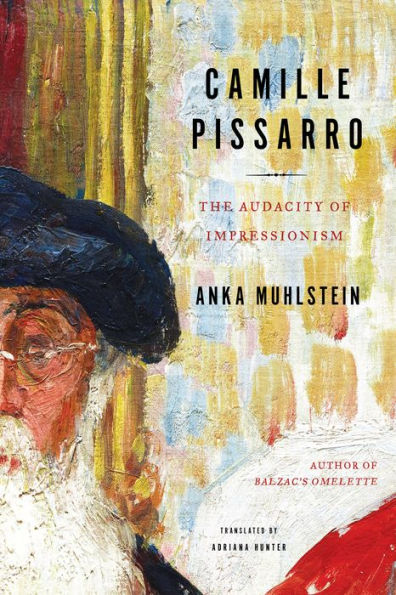Read an Excerpt
Introduction
Camille Pissarro was a most unusual man. Granted, most artists are, but Pissarro knew that he was even more out of step with the France of his day than his peers. “I have a rustic, melancholy temperament, I look coarse and wild,” he acknowledged. Later, he added, “too serious to appeal to the masses and too distant from exotic tradition to be understood by dilettantes. I am too surprising, I break away too often from accepted behavior.” Settled in France from the age of twenty-five but born in the Caribbean, he was not French, and what is more he was Jewish. He never hid this fact and knew that it was not without significance. He saw himself as an interloper in French society even though he was a founding member of the new school of French painting, was affectionately nicknamed the father of Impressionism by his peers, was a close friend of Monet, a longtime associate in Degas’s and Cassatt’s experimental work, a support to Cézanne and Gauguin, and a comfort to Van Gogh, and was backed throughout his career by the great Parisian art dealer Paul Durand-Ruel. Nevertheless, a sense of being set apart, different, and hard to classify persisted, and this is what drew me to Pissarro.
He portrayed himself four times in thirty years, and his self-portraits help us form an impression of his gravitas, his calm, and the intensity of his gaze, but he also left a fifth portrait, a more detailed, more complex, and often unexpected one, the portrait constituted by his correspondence. Reading a person’s correspondence is a little like eavesdropping. We are breaking and entering into the intimate world of someone who has let their guard down. The more sustained the exchange, the more personal it is, and the deeper and more nuanced the letter writer’s self-portrait becomes.
Camille Pissarro left a vast accumulation of letters, most of which were brought together in five volumes and edited by Janine Bailly-Herzberg. Although not exhaustive, these volumes are certainly enough to give an idea of a painter’s life in the nineteenth century and, more specifically, of the audacity of the Impressionist adventure. But what I found most interesting about this correspondence was the self-portrait that emerges from it. Given that most of Pissarro’s letters are to his children, the tone is utterly unconstrained. Pissarro did not use the familiar tu form when addressing his fellow painters, even those he had known as a student. He always showed his peers a courtesy not far removed from reserve, but abandoned all restraint particularly in his exchanges with his eldest son. The question of religion recurs frequently over the pages. During a period of despondency, this resolute atheist admits that his origins have left their mark on him: “To date, no Jew in this country has produced art, or rather heartfelt, disinterested art, I think that this could be one of the reasons I’m having no luck.”
This is a curious remark insofar as he never interjected political or religious messages in his art. He good naturedly admitted that for a Hebrew he was far from biblical. He felt that painting should be neither literary or historical, nor political or social, but only the expression of a feeling. The fact remains, though, that he was fully conscious of the consequences of his lineage. He confesses to sometimes feeling like an outsider in France. Being not only Jewish but also foreign necessitated a degree of caution that did not come naturally to him. This man who consistently demonstrated bravery in his artistic choices, who was never slow to develop or change his style, or to admit his mistakes, without ever giving way to the pressures of public demand; this man whose personal life was characterized by an absolute refusal to accept family or social conventions; this man still knew he must never openly take part in the political battles of his time. The threat of expatriation enforced on him a reserve that he never waived. Being very sensitive to social injustice, he did whatever was within his means to support anarchist publications but never made public Les Turpitudes sociales (Social turpitudes), a series of striking caricatures about suffering among the working class. And, although he openly sided with the Dreyfusards, he did not play such an active role in their struggle as did many of his peers, including Eugène Carrière, Edouard Vuillard, and the Swiss Félix Vallotton.
All his energy was concentrated into his art, his children’s artistic education, and the fight to have modern art recognized. He was exceptionally hardworking and left a considerable body of work—more than fifteen hundred oils, not to mention the pastels, watercolors, and drawings—as well as being a gifted teacher whose four sons all went on to be respected artists. He had a tremendous talent for attracting and working closely with artists as diverse as Degas, Cézanne, Gauguin, Signac, and Seurat. Whenever the opportunity arose, he refused to comply with the demands of official art, and he alone with Degas participated in every Impressionist exhibition, serenely braving the insults and jeers because he was convinced of the validity of his experimental work.
Perhaps it fell to him, with his particularly independent spirit, to adopt a system that encouraged freedom and autonomy. “Make your plans with no rules, or at least with none that you find offensive,” he advised his son. With this he was arguing for a new tradition, a modern one that granted artists the ability to invent, to keep reevaluating their own work, and to justify their reputation as “fierce revolutionar[ies].”



